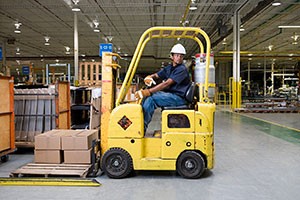Five Ways to Prevent Forklift Accidents

The Occupational Safety and Health Administration (OSHA) reports that one of the most common cause of safety citations is the mishandling of a forklift. This extremely useful yet potentially dangerous machine accounts for many injuries and accidents every year. Here are some ways to reduce these incidents.
1. Proper Training
It may seem easy to use at first, but a forklift is much different than a car, truck, or other vehicle that operators may have driven before. Because a forklift carries heavy items and often operates indoors, it requires that those who drive it have been thoroughly trained and certified. This means that an experienced, certified forklift trainer must teach and certify all new forklift operators, with re-certification required every three years.
2. Proper Speed
There is never any condition that warrants operating a forklift in excess of five miles per hour. Any speed faster than that is reckless and doesn't help to get work done any faster. The equipment and supplies that are usually found around forklifts can be knocked over and can easily injure workers.
3. Load Management
An overweight load can imbalance the forklift, causing tipover accidents or falling loads. A forklift is rated not just for capacity but for a load center, so make sure that loads are secure, balanced, and wrapped if loose or damaged. Never raise or lower the lift unless the forklift is stopped and the brakes are set.
4. Maintenance
Forklifts are like any other piece of heavy equipment - they require scheduled safety checks. All the parts of a forklift should be monitored regularly. In particular, tires need to be examined to make sure that they aren't cracked or damaged, and have the proper amount of air.
5. Safety Equipment
As with any other piece of machinery, the proper operation of a forklift involves the use of adequate safety products. OSHA and employer requirements for hard hats, work gloves, and goggles should be complied with.



